Remember that in a good relationship both members play an important role. If Eur news is bad you have to be aware of what happen in the other foreign currencies. Some of the fundamental reports in U.S. were slightly better than the traders have expected, so the currency markets reacted with the growing. This is one key issue when building a forex trading strategy. It’s really beautiful how she flies but I really love her when she gets wild.
What Drives Forex Currency Market
•April 28, 2009 • Leave a Comment
In many cases the anticipation of an economic condition rather than the condition itself can cause a sudden and dramatic currency price swing if such conditions are seen to be changing.
As currency traders it is our responsibility to know what to expect in terms of a reaction in the forex trading when different things happen, so always think of things in terms of how something affects the supply demand relationship.
Fundamental economic forces such as inflation and interest rates are constantly influencing currency prices. Faith in a government’s ability to stand behind its currency will also impact currency price. A central bank could undertake unilateral purchases/sales of its currency against another currency; or engage in concerted intervention in which it collaborates with other central banks for a much more pronounced effect. Alternatively, some countries can manage to move their currencies, merely by hinting, or threatening to intervene.
The largest fluctuations in currency prices usually occur during Central Bank intervention, when governments trade foreign currencies in huge amounts in an attempt to either raise or lower the value of their own currency. This, as well as many other factors such as interest rate changes, economic figures, political instability and large lot transactions by hedge funds can move the market.
The main forex influencer is global news and events. Most newcomers react violently to news like this and close their positions and subsequently miss out on some of the best trading opportunities by waiting until the market calms down. The potential in foreign currency trading is in the volatility, not in its tranquility.


Shocking Numbers, Dark Cloud Over Europe
•December 29, 2008 • Leave a Comment
The euro appears to have found significant strength recently. The currency market is favoring the euro against both the U.S. dollar and the U.K. pound. Both currencies are finding it hard to stop the euro in online forex trading as their economies continue to struggle. Euro strength and dollar weakness further emerge in thin trading activity as geopolitical uncertainty creeps higher. Euros anti-dollar attribute is being underscored by the ECBs reluctance to telegraph further easing, the negative releases from the US and the ensuing geopolitical uncertainties from the Middle East and South Asia. Euro strength is creeping across the board, hitting fresh all time high against Sterling at 0.9795, paving the path for parity as early as this week.
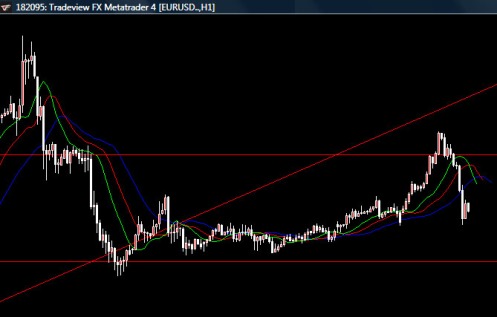 The British Pound continued its move towards parity against the Euro and slid lower against the U.S. Dollar ahead of the New Year, which suggests that investors remain bearish against the currency as market participants widely expect the Bank of England to lower borrowing costs even further in January. The pound is being driven down by expectations that the Bank of England will cut interest rates to stimulate the economy, which shrank by 0.6 percent in the third quarter, and looks like it is heading into a serious recession. Interest rate cuts can weaken demand for a country’s currency by reducing the yield on interest-bearing investments.
The British Pound continued its move towards parity against the Euro and slid lower against the U.S. Dollar ahead of the New Year, which suggests that investors remain bearish against the currency as market participants widely expect the Bank of England to lower borrowing costs even further in January. The pound is being driven down by expectations that the Bank of England will cut interest rates to stimulate the economy, which shrank by 0.6 percent in the third quarter, and looks like it is heading into a serious recession. Interest rate cuts can weaken demand for a country’s currency by reducing the yield on interest-bearing investments.
Weakening fundamentals have certainly dragged on the British Pound throughout the second half of the year, and the event risks scheduled for the following week could weigh on the currency as growth prospects deteriorate at a rapid pace. As credit conditions remain far from normal, private sector spending, which is one of the biggest drivers of growth, is likely to remain subdued throughout the coming months, and would only heighten the downside risks for growth going forward.
Federal Reserve Announced Reduction But Scenarios Looks Pessimistic
•December 17, 2008 • 4 Comments
The failure of the housing market to bottom despite the measures taken by the U.S. government and Fed remains an albatross for the economy and a worry for investors. The latest signs of economic distress came hours before Federal Reserve policy-makers were expected to announce another reduction in official interest rates, and the data was likely to fan speculation they could cut by even more than the anticipated half percentage point to ward off deflation risks. Governor King in his letter of explanation made it clear that inflation will continue to fall and that in 2009 a letter to explain why the rate has fallen more than 1% below their target may be needed.
Despite, the improved outlook for the future the drop in the current situation assessment demonstrates how dire things currently are in Europe. Therefore, investors are expecting the central bank will need to continue their current easing policy which may limit upside potential for the Euro. In a similar fashion to the Euro, the British Pound has breached resistance but the bullish reversal has been less profound than that in the Euro. The weak data will reinforce fears over the UK economy which is likely to prevent more than a limited corrective recovery for Sterling. The Euro has given back some of its recent gains after the region’s PMI reading showed further contraction in both the manufacturing and service sectors.
The US Dollar has retreated against the major forex currencies over recent days, suffering most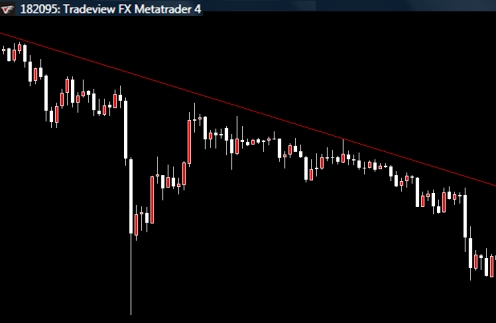 at the hands of the Euro and the Japanese Yen. Prices are now poised to test pivotal support and it suggests the current retracement may be ready to turn over. The FOMC benchmark interest rate cut could add to the dollar’s recent weakness. Although the central bank is running out of room with rates at 1.00%, the fragile state of the economy is forcing their hand and leading them toward a zero interest rate policy. Inflation and housing data are due to cross the wires before hand and are expected to strengthen the case for further easing.
at the hands of the Euro and the Japanese Yen. Prices are now poised to test pivotal support and it suggests the current retracement may be ready to turn over. The FOMC benchmark interest rate cut could add to the dollar’s recent weakness. Although the central bank is running out of room with rates at 1.00%, the fragile state of the economy is forcing their hand and leading them toward a zero interest rate policy. Inflation and housing data are due to cross the wires before hand and are expected to strengthen the case for further easing.
However, if we see prices ease less than expected, it could raise inflation expectations which may lead the central bank to keep rates on hold, which could send the dollar soaring. All that said if we remain extremely cautious as we are right now, any bailout or extreme rates cut will do little to restore confidence in the banking system and to drive us out of this crisis. Risk aversion will make all the upside scenarios less optimistic.
The Potential Bailout Of The U.S. Automakers Continues To Move Forward Which Could Spark Risk Appetite.
•December 9, 2008 • 1 Comment The bullish momentum from Wall St yesterday hasn’t found its way overseas as Asian and European markets were tepid. U.S. stock index futures pointed to a higher opening on Tuesday, following the previous session’s strong rally, but gains could be limited by negative news in the tech sector and bleak economic data from Japan. The failure of the housing market to bottom despite the measures taken by the U.S. government and Fed remains an albatross for the economy and a worry for investors. The potential bailout of the U.S. automakers continues to move forward which could spark risk appetite which would weigh on the dollar. Congressional Democrats and the White House have been in talks for several days to finalize an emergency loan package estimated to be worth up to $15 billion to prevent the collapse of General Motors Corp and Chrysler LLC. Longer-term help also could be on the way if certain conditions were met.
The bullish momentum from Wall St yesterday hasn’t found its way overseas as Asian and European markets were tepid. U.S. stock index futures pointed to a higher opening on Tuesday, following the previous session’s strong rally, but gains could be limited by negative news in the tech sector and bleak economic data from Japan. The failure of the housing market to bottom despite the measures taken by the U.S. government and Fed remains an albatross for the economy and a worry for investors. The potential bailout of the U.S. automakers continues to move forward which could spark risk appetite which would weigh on the dollar. Congressional Democrats and the White House have been in talks for several days to finalize an emergency loan package estimated to be worth up to $15 billion to prevent the collapse of General Motors Corp and Chrysler LLC. Longer-term help also could be on the way if certain conditions were met.
The euro rallied against the world’s most heavily traded currencies on speculation that a wave of stimulus plans engineered by a number of European governments could lead to a general recover in the appetite for riskier assets like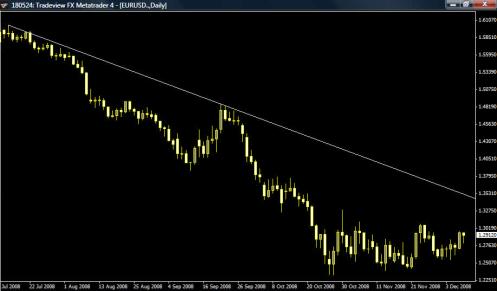 higher yielding currencies. The single currency was trading heavy after the German ZEW survey outlook reading unexpectedly rose to -45.2 from -53.5 as aggressive easing from the ECB has boost investor’s optimism. Despite, the improved outlook for the future the drop to -64.5 from -50.4 in the current situation assessment demonstrates how dire things currently are in Europe’s largest economy. Therefore, traders are expecting the central bank will need to continue their current easing policy which may limit upside potential for the Euro.
higher yielding currencies. The single currency was trading heavy after the German ZEW survey outlook reading unexpectedly rose to -45.2 from -53.5 as aggressive easing from the ECB has boost investor’s optimism. Despite, the improved outlook for the future the drop to -64.5 from -50.4 in the current situation assessment demonstrates how dire things currently are in Europe’s largest economy. Therefore, traders are expecting the central bank will need to continue their current easing policy which may limit upside potential for the Euro.
The weak data will reinforce fears over the UK economy which is likely to prevent more than a limited corrective recovery for Sterling. The Pound would find support after the release at 1.4740 as traders sold the rumor and bought the news. The drop in activity was lead by a 4.0% decline in durable goods and a 4.2% fall in metals demonstrating the impact of the global slowdown. Despite, the BoE cutting rates by 250 bps over the past month, markets are still looking for another 45 bps in cuts. Underlying confidence in the currency still remains extremely fragile on fears over underlying capital flows out of the UK.
Confident Is Lost, Global Equity Markets Fall and Substantial Yen Losses Are Unlikely
•November 28, 2008 • Leave a Comment No major swings were registered in Forex or equities except for the Australian benchmark index which soared over 4%, led by mining companies. The move has not been replicated in Forex where the yen has been virtually static. This may change later today depending on whether we see a Friday squeeze. The yen is liable to remain trapped between increased domestic fears and a major lack of confidence in the international economy.
No major swings were registered in Forex or equities except for the Australian benchmark index which soared over 4%, led by mining companies. The move has not been replicated in Forex where the yen has been virtually static. This may change later today depending on whether we see a Friday squeeze. The yen is liable to remain trapped between increased domestic fears and a major lack of confidence in the international economy.
Underlying economic fears continued to provide some degree of defensive dollar support against the Euro. Nevertheless, as Wall Street rallied, the Euro pushed back to 1.29 later in US trading with liquidity dipping ahead of the Thanksgiving holiday. The EUR initially gained ground versus the US Dollar following the rise in European stock markets, but issued a retreat after disappointing economic data put downward pressure on the 15-nation currency.
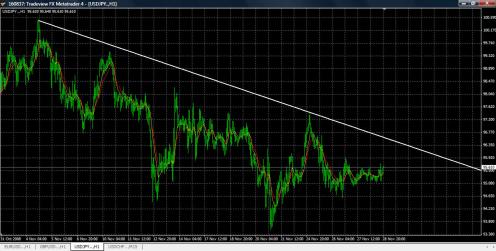 The UK GfK consumer confidence survey was also released overnight and showed a slight drop in household pessimism to -35 in November from -36. Sterling has scope for a limited correction stronger, but will struggle to make strong headway given fears over the underlying economic situation. A sharp rally in the UK stock market index pushed the UK currency to highs above 1.5150 against the dollar and was consolidating close to 1.51 on Tuesday. The latest mortgage-lending data continued to indicate a weak market while Bank of England Governor King was generally downbeat over the economy and stated that the bank would take all action necessary to meet the inflation target.
The UK GfK consumer confidence survey was also released overnight and showed a slight drop in household pessimism to -35 in November from -36. Sterling has scope for a limited correction stronger, but will struggle to make strong headway given fears over the underlying economic situation. A sharp rally in the UK stock market index pushed the UK currency to highs above 1.5150 against the dollar and was consolidating close to 1.51 on Tuesday. The latest mortgage-lending data continued to indicate a weak market while Bank of England Governor King was generally downbeat over the economy and stated that the bank would take all action necessary to meet the inflation target.
This crisis is also pummeling countries outside the euro zone. Sweden slid into recession after the third quarter, data showed on Friday, and economists expect the Swedish central bank could slash rates also by an unprecedented 75-100 bps. Japan’s industrial output and household spending tumbled in October, evoking memories of the decade-long stagnation of the 1990s and highlighting how rapidly the global financial crisis is derailing major economies. Countries as diverse as Canada, India and South Korea also released figures painting a bleak economic picture, but stocks edged higher as investors tentatively looked for bargains after six months of falls for global equity markets.
Risk Aversion Remains, Optimistic Scenarios Seems Far Away.
•November 24, 2008 • 1 Comment Citigroup was the world’s largest bank by market value as recently as 2007, when it was worth more than $250 billion. At Friday’s close it was worth just $20.5 billion, making it smaller than each of Canada’s top three banks. The U.S. government has bailed out Citigroup Inc, agreeing to shoulder most of the potential losses on $306 billion of high risk assets and inject $20 billion of new capital, in its biggest rescue of a bank yet. Citigroup’s rescue marks the latest government effort to contain a widening financial meltdown that has caused the disappearance or bankruptcies of companies including Bear Stearns Cos, Lehman Brothers Holdings Inc and Washington Mutual Inc.
Citigroup was the world’s largest bank by market value as recently as 2007, when it was worth more than $250 billion. At Friday’s close it was worth just $20.5 billion, making it smaller than each of Canada’s top three banks. The U.S. government has bailed out Citigroup Inc, agreeing to shoulder most of the potential losses on $306 billion of high risk assets and inject $20 billion of new capital, in its biggest rescue of a bank yet. Citigroup’s rescue marks the latest government effort to contain a widening financial meltdown that has caused the disappearance or bankruptcies of companies including Bear Stearns Cos, Lehman Brothers Holdings Inc and Washington Mutual Inc.
After the U.S. government agreed to pump $20 billion of new capital into Citigroup, averting a bank collapse that could have crippled the world’s financial system, U.S. stocks headed for a higher open on Monday. The Citigroup rescue, along with Friday’s news that President-elect Barack Obama, would assign current New York Federal Reserve Bank President Timothy Geithner as U.S. Treasury Secretary, underpinned positive sentiment. However, investors remain extremely cautious that the plan to save Citigroup will do much to prevent the world’s largest economy suffering a deep recession. For many investors, the bailout will do little to quickly restore confidence in the U.S. banking system or revive lending to consumers as the vital Christmas shopping season approaches
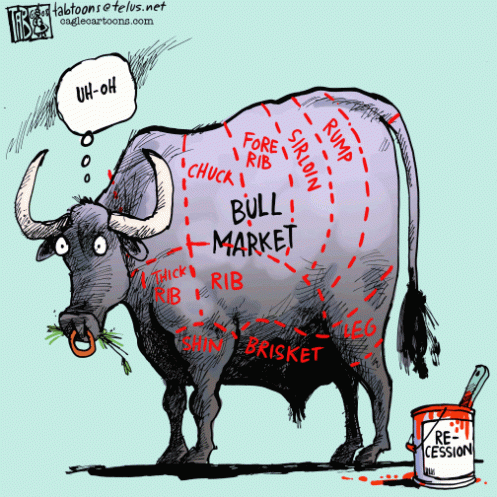 Despite the Citigroup news, most Asian markets closed lower Monday though the Nikkei in Japan was closed due to a public holiday. Britain’s top share index ended 2.4 percent lower on Friday as fears over the fate of banking giant Citi and nervousness about the global economy gripped investors, leading them to sell relatively risky equities. Highlighting the speed at which things have changed, Citigroup has twice cut its growth forecasts for India in the space of a month. It now sees growth in 2008/09 at 6.8 percent even with aggressive interest rates cuts.
Despite the Citigroup news, most Asian markets closed lower Monday though the Nikkei in Japan was closed due to a public holiday. Britain’s top share index ended 2.4 percent lower on Friday as fears over the fate of banking giant Citi and nervousness about the global economy gripped investors, leading them to sell relatively risky equities. Highlighting the speed at which things have changed, Citigroup has twice cut its growth forecasts for India in the space of a month. It now sees growth in 2008/09 at 6.8 percent even with aggressive interest rates cuts.
Trading activity was more passive than usual at Monday opening. The Yen pushed higher this morning as investors cut higher-yielding currencies, with a US government rescue for embattled bank Citigroup doing little to revive appetite for risky positions. In conclusion, if we remain extremely cautious as we are right now, any bailout or extreme rates cut will do little to restore confidence in the banking system and to drive us out of this crisis and risk aversion will make all the upside scenarios less optimistic.
Prices Are The New Stigma In Central Banks Plans
•November 21, 2008 • 1 Comment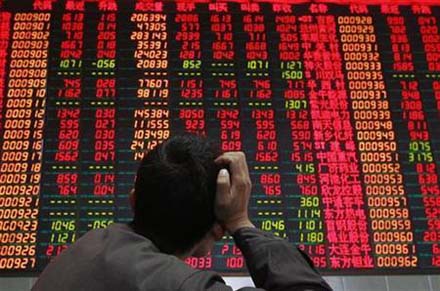 Conditions within the financial sector will be watched very closely as the relative prospects across the major financial sectors will be an important determining factor exchange rates. Reversing recession is doubly difficult if prices fall broadly and constantly because there is no incentive to spend as consumers and firms know things can only get cheaper. With banks already reluctant to lend — after a U.S. housing market collapse caused many to sustain huge losses and some to fail — deflation would represent a perfect economic storm.
Conditions within the financial sector will be watched very closely as the relative prospects across the major financial sectors will be an important determining factor exchange rates. Reversing recession is doubly difficult if prices fall broadly and constantly because there is no incentive to spend as consumers and firms know things can only get cheaper. With banks already reluctant to lend — after a U.S. housing market collapse caused many to sustain huge losses and some to fail — deflation would represent a perfect economic storm.
Central banks, faced with a sudden collapse in growth as well as inflation, have slashed rates and are expected to keep doing so, although economists warn they may run out of rope before prices hit rock-bottom. Euro zone demand is plunging and price pressures vanishing, business surveys showed on Friday, while central bankers weighed the bleak prospect of deflation. The Bank of Japan left its key interest rate at just 0.3 percent and said there would be a long road to recovery. Japan’s decade-long battle with steadily falling prices and economic stagnation looms large in officials’ memories. The United States, Britain and Europe are expected to ease their rates further next month as the worst financial crisis in 80 years hastens recession across much of the globe.
Currency traders however ignored the dour news despite clear evidence of near total collapse of demand amongst the region’s consumers and producers. With economic dema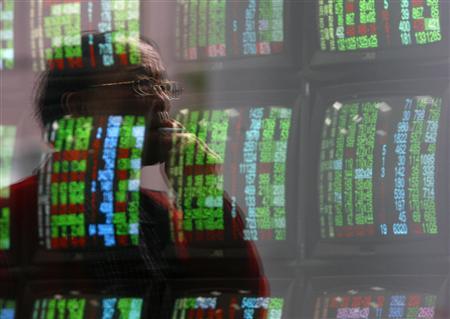 nd deteriorating across the globe micro economic news is having minimal impact on currency trade these days as risk on/risk off continues to the only theme in play.
nd deteriorating across the globe micro economic news is having minimal impact on currency trade these days as risk on/risk off continues to the only theme in play.
With US economic calendar barren today, the price action in the currencies will very likely be driven by equity flows once again. Today’s option expiration could create some technical movements but the ultimate question facing the North American session is whether traders will be willing to go long equities into the weekend. If risk appetite continues for the day, euro and cable may be pushed higher. Having carved out broad support at 1.2500 EUR/USD and 1.4500 GBP/USD the FX market remains in range with a possible counter trend rally in store as sentiment shifts from total fear to a small inking of hope that global capital markets have found a near term bottom.
Recession Continue Its Expansion
•November 19, 2008 • 1 Comment The second largest in the world’s economy fell into recession for the first time since 2001 as Japan’s GDP fell an annualized 0.4 percent in Q3. This was the second consecutive contraction, and with a global economic slowdown impairing demand for foreign goods, this export-dependent nation will likely feel the pain. Nevertheless, the Japanese yen still has bullish potential as volatility remains high, leaving risk aversion in play. On the other hand, positioning is neutral for most currencies, suggesting that the US dollar may continue strengthening as recession continues its expansion across the world. Australia faces the risk of recession at the beginning of next year as the Westpac leading index plunged to the lowest in 23 years. The Euro and British Pound remained range-bound in overnight trading.
The second largest in the world’s economy fell into recession for the first time since 2001 as Japan’s GDP fell an annualized 0.4 percent in Q3. This was the second consecutive contraction, and with a global economic slowdown impairing demand for foreign goods, this export-dependent nation will likely feel the pain. Nevertheless, the Japanese yen still has bullish potential as volatility remains high, leaving risk aversion in play. On the other hand, positioning is neutral for most currencies, suggesting that the US dollar may continue strengthening as recession continues its expansion across the world. Australia faces the risk of recession at the beginning of next year as the Westpac leading index plunged to the lowest in 23 years. The Euro and British Pound remained range-bound in overnight trading.
The USD continues to trade between 1.2500-1.2800 against the EUR, and the pair seems to be 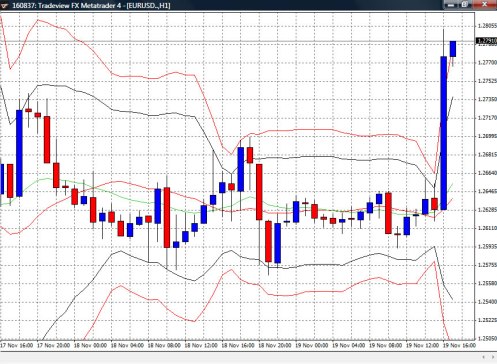 moving without direction in anticipation of the next big event to hit the news. Risk aversion continues to give the Dollar strength and that is likely to continue until we see signs of stabilization. Testifying before Congress yesterday, Federal Reserve Chairman Ben Bernanke said massive demand for the USD means it remains unrivaled as the world’s reserve currency.
moving without direction in anticipation of the next big event to hit the news. Risk aversion continues to give the Dollar strength and that is likely to continue until we see signs of stabilization. Testifying before Congress yesterday, Federal Reserve Chairman Ben Bernanke said massive demand for the USD means it remains unrivaled as the world’s reserve currency.
As for today, a batch of data is expected from the U.S. economy. These figures are expected to set the tone for the USD’s pairs and crosses. Special attention should be given to the U.S. Building Permits which is expected to fall to 0.77M. Traders pay close attention to this figure as it has a strong correlation with the value of the U.S. Dollar. Also today, the Core CPI is scheduled which should also have an impact on the market because if it delivers unfavorable figures, it will validate a problematic U.S. market, and the USD is likely to weaken as a result.
 Sentiment in the U.S. economy has brightened in the past week following better-than-expected news. However, the EUR is still showing signs of resilience as it traded in a relatively close range yesterday even though there was a little volatility throughout non-EUR crosses. It will be crucial for traders to identify how the preceding economic indicators from the U.S., European and Japanese economies will affect their positions.
Sentiment in the U.S. economy has brightened in the past week following better-than-expected news. However, the EUR is still showing signs of resilience as it traded in a relatively close range yesterday even though there was a little volatility throughout non-EUR crosses. It will be crucial for traders to identify how the preceding economic indicators from the U.S., European and Japanese economies will affect their positions.
There are no economic data releases expected from the Euro-Zone today; however there will be a nice batch of data from the U.S. which will affect the EUR’s major counterparts. Traders should pay close attention to the response of equity markets to determine how to continue with EUR positions as well as to pay attention to the news from the United States to place their transaction accordingly with today’s developments.
Worldwide Recession
•November 14, 2008 • Leave a Comment The Euro-zone 3Q GDP figures revealed that the region’s economy had entered a recession. The decline met economist predictions despite France surprising with growth of 0.1% as Germany’s 0.5% drop dragged down the overall region. The region also saw the final reading for consumer prices remain at 3.2% which was a decline from September’s 3.6% reading.
The Euro-zone 3Q GDP figures revealed that the region’s economy had entered a recession. The decline met economist predictions despite France surprising with growth of 0.1% as Germany’s 0.5% drop dragged down the overall region. The region also saw the final reading for consumer prices remain at 3.2% which was a decline from September’s 3.6% reading.
The financial crisis continues to wreak havoc on the world’s major economies, with official data showing the 15-nation euro zone economy had shrunk by 0.2 percent for the second quarter in a row. The United States is probably already in recession, most economists agree, but official data showing that will not come out until January.
Now that the Euro-zone is clearly in its first recession in 15 years and price pressures are on track to ease below the central bank’s 2% target, there are very little obstacles to prevent the ECB from further easing. Yet, despite the anticipation of several rate cuts by the MPC over the next year the Euro has remained in 1.2500 – 1.300 range which may lead one to think that a short-term bottom may be in place. At the moment the euro is unwavering today, suspended around 1,2735 level with a flat 15 EMA and with Bollinger bands very close. Not a good day to trade.
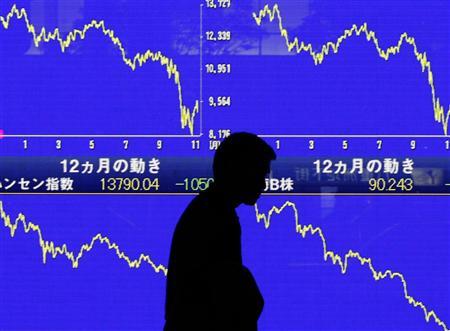 The U.S. economic calendar will present significant event risk with retail sales and U of M consumer confidence on tap. Consumer consumption is expected to have fallen 2.1% in October following a 1.2% pull back the month prior. It would be the largest decline since November, 2001 as Americans are expected to have retrenched due to the credit crisis and a looming recession. The lack of optimism from consumers will be measured in the sentiment reading which is forecasted to drop to 56.2 which would be the lowest reading in nearly 28 years.
The U.S. economic calendar will present significant event risk with retail sales and U of M consumer confidence on tap. Consumer consumption is expected to have fallen 2.1% in October following a 1.2% pull back the month prior. It would be the largest decline since November, 2001 as Americans are expected to have retrenched due to the credit crisis and a looming recession. The lack of optimism from consumers will be measured in the sentiment reading which is forecasted to drop to 56.2 which would be the lowest reading in nearly 28 years.
Investors are also digesting comments from Federal Reserve Chairman Ben Bernanke that the markets remain under “severe strain.” Bernanke, speaking at conference in Germany, also left open the possibility of another interest rate cut next month. The combination of the dour fundamental readings will signal that domestic growth in the country may come to a standstill and could lead to equity markets reversing yesterday’s gains. Therefore, we could see some dollar strength as safe-haven flows lend support to the dollar.

